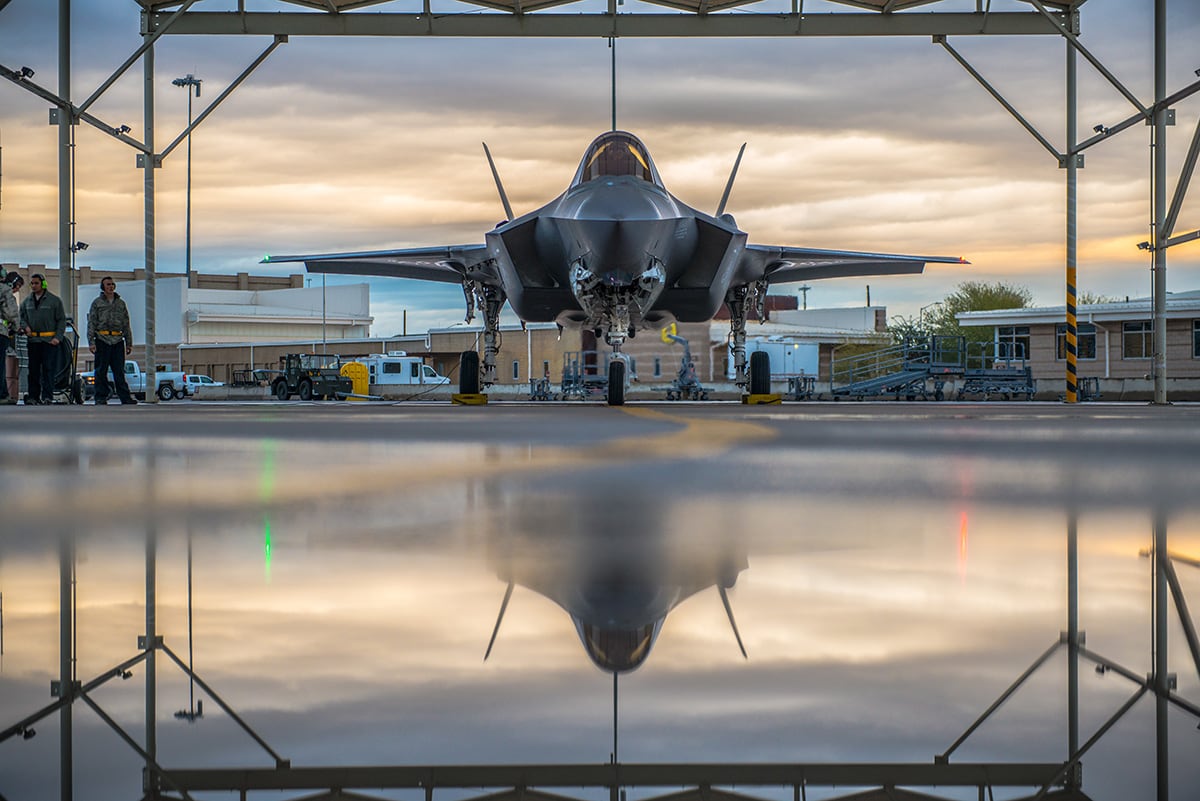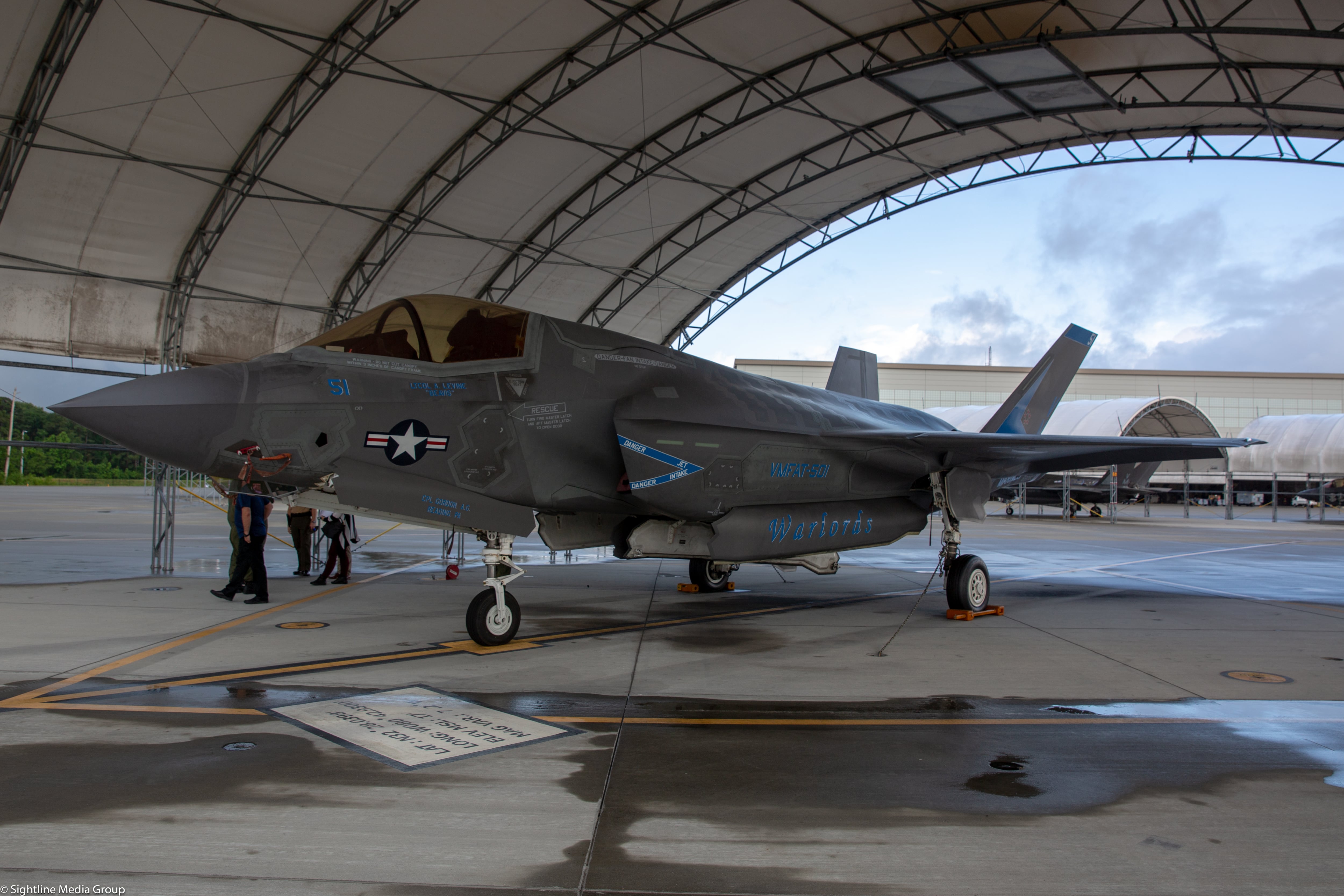WASHINGTON — Even after years of updates and improvements, the F-35’s logistics system continues to be beset by data gaps and bugs that make it more difficult for maintainers to keep the joint strike fighter mission-ready, stated the Pentagon’s chief weapons tester in a new report.
The Lockheed Martin-made Autonomic Logistics Information System or ALIS was “designed to bring efficiency to maintenance and flight operations, but it does not yet perform as intended,” wrote Robert Behler, director of operational test and evaluation, in his annual report released Thursday.
RELATED

In effect, these problems cause the military to ground aircraft that are erroneously described as not mission capable, slow down a squadron’s ability to start flying after being deployed, and create a bigger workload for maintainers.
DOT&E stated that most ALIS-related deficiencies fall under three categories.
The first is a high number of workarounds needed to use the ALIS system to do mission planning, repairs and supply chain management for the F-35. Functions that should be automatic often require manual input by the maintainer.
Secondly, the data provided by ALIS is often incomplete or flat-out incorrect. The reasons for this are varied —contractors do not rely on the system for their own use, and thus do not always input information correctly or in a standardized way. Even the system’s own manufacturer, Lockheed Martin, did not start using ALIS on the F-35′s production floor to track new aircraft until March 2018, the report said.
The end result is a poor user experience. Fixing more complicated datasets, such as the technical information that follows a complex piece of machinery like the F-35’s ejection seat, eats up a lot of time. But more importantly, these problems result in missed sorties, with the Air Force naming this problem one of its top five drivers of non-mission capable rates.
RELATED

And during deployments on ships or in austere locations, this complexity makes it difficult to set up ALIS and begin flying.
“Often, the timeframe to start flight operation is longer than that with legacy aircraft,” the report notes.
This plays into a third problem: a lack of confidence in ALIS that leads those who work with the system to develop other ways of managing data that ALIS was developed to track.
Troubles with the ALIS system have been documented extensively by DOT&E and other sources in previous years.
During a May 2018 visit to Marine Corps Air Station Beaufort, S.C., which has some of the lowest mission capable rates across the F-35 enterprise, one maintainer told Defense News that ALIS sometimes reports that certain F-35 parts will take several years to arrive. Then, it’s up to maintainers to make the phone calls needed to see whether that can be expedited.
RELATED

DOT&E notes that the program office has been making progress on fixing certain shortfalls. However, other issues are not being addressed in a timely manner and typically take an “excessive” period of time to resolve.
The report points out that ALIS’ Squadron Health Management application and Customer Maintenance Management System application will sometimes show conflicting information as to whether an aircraft is mission capable. This problem has been known since 2012, but persists despite multiple new software patches being developed since then.
In a statement, Lockheed Martin said it is making investments to ALIS that will “enhance data integrity, improve user experience and interface, integrate robotic process automation, lower maintenance labor and dramatically improve speed.”
For future version of ALIS, the program office wants to move toward fielding smaller increments of software more often and more rapidly — a decision that DOT&E believes is a step in the right direction.
However, the office believes that the program doesn’t test the system in a way that mimics how users operate in on a day-to-day basis, and criticizes ALIS testing as not being standard across the different labs that evaluate it.
“A single ALIS test venue would increase test efficiency and support more timely fielding of ALIS software to operational unit,” the report says. “The current, non-operationally representative method of testing ALIS releases leads to delays in finding and fixing deficiencies, often after the new software is fielded.”
Aside from ALIS’ many problems, the report highlighted a number of concerns about the F-35 program:
- Durability testing shows that early versions of the Marine Corps’ F-35B short takeoff and vertical landing jet may last as little as 2,100 flight hours — about a quarter of the expected service life of 8,000 hours. This means that certain B models could end up being retired as early as 2026—only about a decade after the jet was declared initially operational. This issue, first reported by Bloomberg, was also detailed at length by The War Zone. In its statement, Lockheed said it remains confident that the F-35B will meet its 8,000 hour service life requirement by having early models undergo “planned modifications and fleet management.” It added: “Aircraft delivering today incorporate these design changes in the build process to ensure they’ll meet 8,000 hours or more.”
- DOT&E considers the accuracy of the F-35A’s internal gun to be unacceptable and not in line with contract specifications. While software upgrades have enhanced the stability of the gun, no hardware or software changes have been implemented that would improve the accuracy of the gun. Furthermore, department investigations have found that guns are misaligned in various ways, so that the true alignment of the gun cannot be assumed.
- Although the program validated that it can create mission data files, which act as the jet’s threat library, DOT&E believes it “lacks adequate equipment” to create new data files rapidly “under stressing conditions,” which could hinder its ability to respond to adversaries during a war.
- DOT&E also continues to be concerned about the F-35’s modernization program, which is using an agile software development plane called Continuous Capability Development and Delivery or C2D2. The testing office believes the JPO’s plan to refresh the aircraft’s software every six months is a “high risk” strategy, and says that the program office should ensure that as much testing as possible is done in a laboratory setting rather than via flight tests.
Valerie Insinna is Defense News' air warfare reporter. She previously worked the Navy/congressional beats for Defense Daily, which followed almost three years as a staff writer for National Defense Magazine. Prior to that, she worked as an editorial assistant for the Tokyo Shimbun’s Washington bureau.





